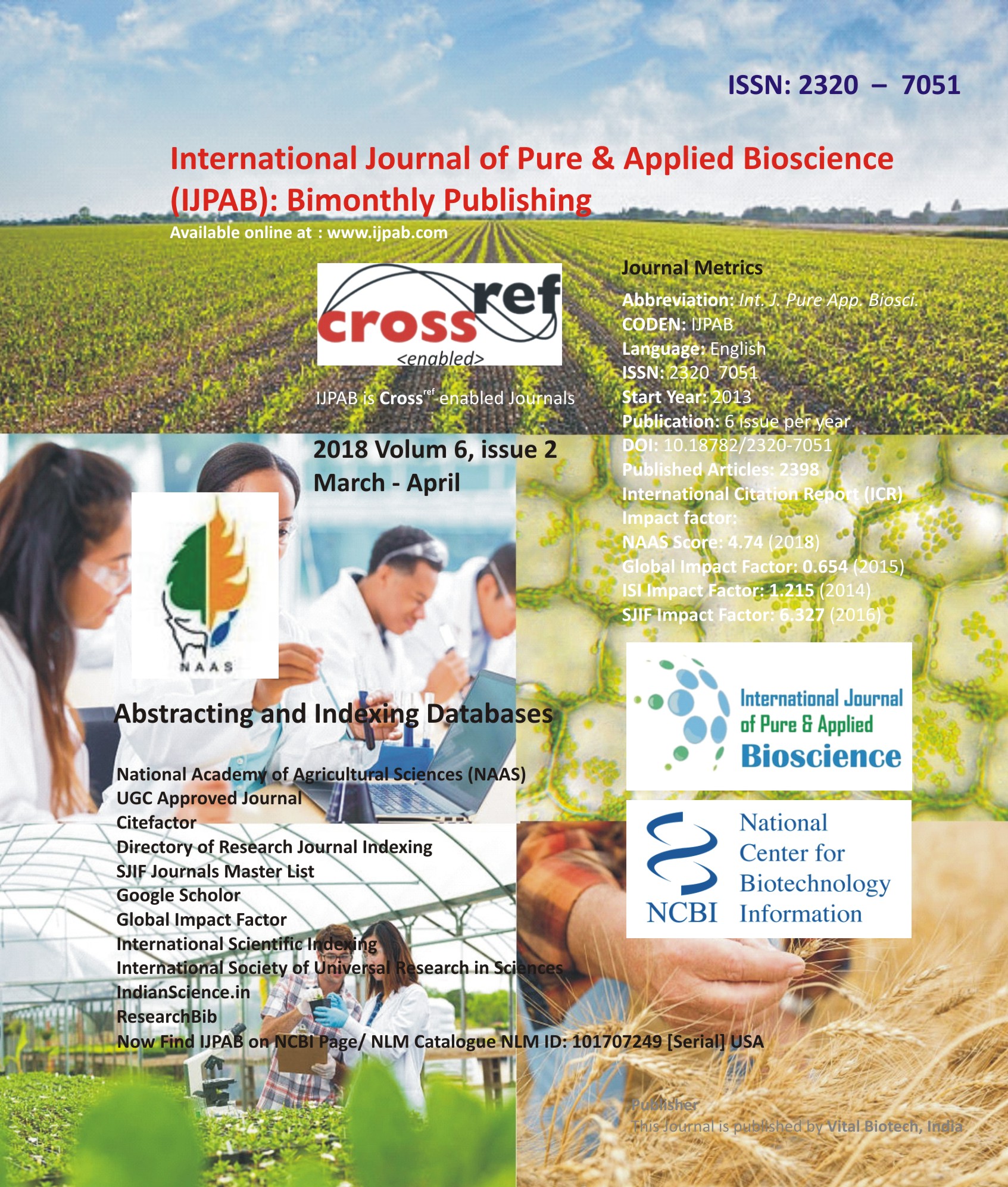
-
No. 772, Basant Vihar, Kota
Rajasthan-324009 India
-
Call Us On
+91 9784677044
-
Mail Us @
editor@ijpab.com
International Journal of Pure & Applied Bioscience (IJPAB)
Year : 2018, Volume : 6, Issue : 2
First page : (1483) Last page : (1487)
Article doi: : http://dx.doi.org/10.18782/2320-7051.6241
Survey of Incidence of Pigeonpea Cyst Nematode (Heterodera cajani) and Wilt Complex of Pigeonpea in parts of North Eastern Karnataka
Saddamhusen Alase, Y. S. Amaresh*, S. B. Mallesh, Gururaj Sunkad and S. Muniswamy1
Department of Plant Pathology, College of Agriculture, Raichur
1Department of Genetics and Plant Breeding, ARS, Kalaburgi, University of Agricultural Sciences, Raichur, India
*Corresponding Author E-mail: ysama2008@rediffmail.com
Received: 10.02.2018 | Revised: 16.03.2018 | Accepted: 22.04.2018
ABSTRACT
Pigeonpea (Cajanus cajan) is an important crop being cultivated in semiarid tropics particularly in Indian subcontinents, Southern and Eastern Africa. A roving survey for incidence of cyst nematode and wilt complex in pigeonpea was taken up during 2015 at different places of North Eastern Karnataka. Soil and roots were collected from the rhizosphere of infested pigeonpea plants. Randomly 10 plants selected in different locations in a field and numbers of plants wilted were counted and the mean wilt incidence was expressed in percentage. The soil was mixed thoroughly and 250 g of soil was processed following Cobb’s sieving and decanting method where cyst and J2’s were separated in separate mesh size sieves. The survey results revealed that in Raichur district, maximum disease incidence was observed in Shaktinagar village of Raichur taluk (12%) followed by Gabbur of Deodurg taluk (10.5%) and lowest was in UAS campus Raichur (7%). In Yadgir district, maximum disease incidence was observed in Alishnagar village of Shahapur taluk (16.5%) followed by Gurmitkal village of Yadgir taluk and lowest was in Doranhalli village of Shahapur taluk (8.5%). In Kalaburgi district, maximum disease incidence was observed in Kanadal village of Kalaburgi taluk (20%) followed by Neelalli village of Sedam taluk (16.5%) and lowest was in ARS, Kalaburgi (5%). In Bidar district, maximum disease incidence was observed in Hallikheda (B) village of Humnabad taluk (13.5%) followed by Janawad village of Bidar taluk (13%) and lowest was in Chitguppa village of Humnabad taluk (7%).
Key words: Cajanus cajan, cyst, Fusarium udum, Heterodera cajani, Wilt complex.
Full Text : PDF; Journal doi : http://dx.doi.org/10.18782
Cite this article: Alase, S., Amaresh, Y.S., Mallesh, S.B., Sunkad, G. and Muniswamy, S., Survey of Incidence of Pigeonpea Cyst Nematode (Heterodera cajani) and Wilt Complex of Pigeonpea in parts of North Eastern Karnataka, Int. J. Pure App. Biosci.6(2): 1483-1487 (2018). doi: http://dx.doi.org/10.18782/2320-7051.6241

